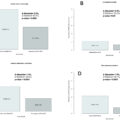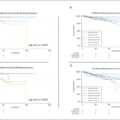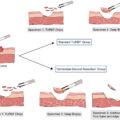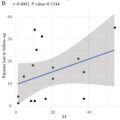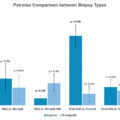Highlights
- •
Bempegaldesleukin is a pegylated interleukin-2 cytokine.
- •
This phase 2 study was conducted in patients previously untreated advanced or metastatic urothelial carcinoma and low PD-L1 expression.
- •
The addition of bempegaldesleukin to the PD-1 checkpoint inhibitor nivolumab did not improve clinical benefit.
Abstract
Background
In PIVOT-02, bempegaldesleukin (BEMPEG), a pegylated interleukin-2 cytokine prodrug, in combination with nivolumab (NIVO), a Programmed cell death protein 1 inhibitor, demonstrated the potential to provide additional benefits over immune checkpoint inhibitor monotherapy in patients with urothelial carcinoma, warranting further investigation. We evaluated BEMPEG plus NIVO in cisplatin-ineligible patients with previously untreated locally advanced or metastatic urothelial carcinoma.
Methods
This open-label, multicenter, single-arm, phase II study enrolled patients with locally advanced/surgically unresectable or metastatic urothelial carcinoma and who were ineligible for cisplatin-based treatment. Patients received BEMPEG plus NIVO were administered intravenously every 3 weeks for ≤2 years or until progression or unacceptable toxicity. The primary endpoint was objective response rate (ORR) by blinded independent central review (BICR) in patients with low programmed death ligand-1 (PD-L1) expression. Secondary endpoints included ORR and duration of response in the overall population. Progression-free survival (PFS) and overall survival (OS) were exploratory endpoints.
Results
One hundred and eighty-eight patients were enrolled; 123 patients were PD-L1 low (combined positive score [CPS] <10; 65.4%), 59 were PD-L1 high (31.4%; CPS ≥10), and 6 had PD-L1 status unknown (3.2%). ORR per blinded independent central review in patients with PD-L1-low tumors was 17.9% (95% confidence interval [CI] 11.6–25.8) while in all treated patients was 19.7% (95% CI 14.3–26.1). Median PFS and OS in the overall population were 3.0 months and 12.6 months, respectively. BEMPEG plus NIVO combination was well tolerated, with a safety profile similar to previously reported trials; no new or unexpected safety signals were reported.
Conclusions
BEMPEG plus NIVO did not meet the efficacy threshold for ORR in patients with previously untreated locally advanced or metastatic urothelial carcinoma and low PD-L1 expression.
1
Introduction
At the time this study was conducted, standard first-line treatment for cisplatin-ineligible patients with locally advanced or metastatic urothelial carcinoma involved the use of carboplatin-based chemotherapy regimens followed by maintenance immunotherapy with avelumab for patients whose disease responds or remains stable. For patients who are ineligible for any platinum-based therapy, consideration of single-agent immunotherapy was recommended. , However, objective response rate (ORR) and overall survival (OS) for patients treated with first-line immune checkpoint inhibitor (ICI) monotherapy remain low, especially in patients with programmed death ligand-1 (PD-L1)-negative tumors. , Consequently, there remains a significant unmet need for new treatment options.
Early immunotherapy studies predating ICIs explored the use of high-dose interleukin-2 (IL-2) to enhance the immune response via T cell and natural killer (NK) cell expansion. Although high-dose IL-2 has demonstrated durable efficacy in the treatment of some solid tumors, such as metastatic melanoma and renal cell carcinoma (RCC), its use is limited because of significant toxicity and complex administration. ,
Bempegaldesleukin (BEMPEG) is a pegylated IL-2 cytokine prodrug engineered to activate the clinically validated IL-2 pathway in a controlled and sustained fashion, with the goal of preferentially activating and expanding effector CD8+ T cells and NK cells over immunosuppressive regulatory T cells (Tregs) in the tumor microenvironment. This approach has the potential to overcome the historical IL-2 challenges with toxicity and allow for outpatient administration. , BEMPEG also demonstrated nonoverlapping toxicities with approved ICIs in the first-in-human EXCEL study. Based on a strong mechanistic rationale, biological activity and tolerability of BEMPEG, clinical studies were initiated assessing BEMPEG plus the ICI, nivolumab (NIVO) in the treatment of multiple tumor types.
BEMPEG plus NIVO was evaluated in PIVOT-02, a phase I/II study in patients with advanced solid tumors, including previously untreated locally advanced/surgically unresectable or metastatic urothelial carcinoma. BEMPEG plus NIVO resulted in an ORR of 35% and a median progression-free survival (PFS) of 4.1 months in patients with urothelial carcinoma who were ineligible for cisplatin chemotherapy. Responses were observed regardless of baseline PD-L1 expression, including in PD-L1-low tumors and the safety profile was consistent with that reported in other PIVOT-02 cohorts. These preliminary findings indicated that BEMPEG plus NIVO had the potential to provide additional benefits over ICI monotherapy, warranting further investigation. Here we report results from the PIVOT-10 trial that evaluated BEMPEG plus NIVO in previously untreated patients with cisplatin-ineligible advanced or metastatic urothelial carcinoma.
2
Patients and methods
2.1
Study design
This was a phase II, global, multicenter, single-arm, open-label study in patients with previously untreated cisplatin-ineligible locally advanced or metastatic urothelial carcinoma. Full details of the study design have been reported previously. The study was conducted in accordance with the Declaration of Helsinki, the US Food and Drug Administration (FDA) regulations, and the International Council for Harmonization Good Clinical Practice guidelines. All patients provided written informed consent before the conduct of any study procedures.
2.2
Patients
Eligible patients were ≥18 years of age with an Eastern Cooperative Oncology Group performance status (ECOG PS) of ≤2 and measurable disease per Response Evaluation Criteria in Solid Tumors (RECIST) v1.1. Patients had histologically or cytologically documented locally advanced/surgically unresectable or metastatic urothelial carcinoma arising from the renal pelvis, ureters, urinary bladder, or urethra; if the histology was mixed with nonurothelial carcinoma, patients were required to have a dominant urothelial cell component (>50% of the total histology). Patients with a history of brain metastases were eligible provided they were previously treated and stable. Exclusion criteria are provided in Appendix A, Supplementary Methods . Cisplatin ineligibility was based on at least 1 of these criteria: impaired renal function (creatinine clearance of ≥30 mL/min and <60 mL/min); Grade ≥2 hearing loss or peripheral neuropathy (National Cancer Institute’s Common Terminology Criteria for Adverse Events [NCI CTCAE] v5.0); ECOG PS of 2. Patients were allowed to enroll regardless of baseline PD-L1 expression, but must have provided archival or fresh tumor tissue for determination of PD-L1 status at enrollment.
2.3
Determination of PD-L1 status
Tumor PD-L1 status at enrolment, and also for the exploratory efficacy analyses, was determined using the PD-L1 immunohistochemistry (IHC) 22C3 pharmDx assay (Dako, an Agilent Technologies, Inc company, Santa Clara, CA) combined positive score (CPS). For the primary analysis, PD-L1 status was determined using the PD-L1 IHC 28-8 pharmDx assay (Dako, an Agilent Technologies, Inc company, Santa Clara, CA), also reporting CPS. Low tumor PD-L1 expression was defined as CPS <10, and high tumor PD-L1 expression was defined as CPS ≥10. Appendix A, Supplementary Methods describes the rationale for use of both assays in determining PD-L1 status.
2.4
Treatment
Patients received intravenous BEMPEG 0.006 mg/kg followed by intravenous NIVO 360 mg administered every 3 weeks for up to 2 years or until documented disease progression, death, unacceptable toxicity, symptomatic deterioration, patient/investigator’s decision to discontinue treatment, patient withdrawal of consent, loss to follow-up, or study termination by the sponsor. Treatment beyond progression was permitted if there was clinical benefit as determined by the Investigator. Dose delays and reductions were permitted for BEMPEG only, with BEMPEG reduced to 0.003 mg/kg based on observed drug-related toxicities, and continuation at the reduced dose for the remainder of the study.
2.5
Endpoints and assessments
The primary endpoint was ORR, determined by blinded independent central review (BICR) per RECIST v1.1, in patients with low PD-L1 expression to further investigate the efficacy profile observed in PIVOT-02 and the potential for BEMPEG to enhance the effectiveness of anti-PD-1 blockade by NIVO. Secondary endpoints included ORR and duration of response (DOR) by BICR in the overall population, and by investigator assessment in the overall population and low PD-L1 population. PFS and OS were exploratory endpoints.
Safety was evaluated in the overall population; adverse events (AEs) were categorized per NCI CTCAE v5.0.
Disease assessments were performed using computed tomography or magnetic resonance imaging at baseline, then every 9 weeks for the first 12 months, and then every 12 weeks until progression or treatment discontinuation.
2.6
Statistical analysis
The sample size was determined by the number of patients with PD-L1-low status. Based on the assumption that ∼70% of patients have PD-L1-low status, the study was designed to enroll 190 patients to receive treatment to ensure at least 110 patients were PD-L1-low. The overall population included all treated patients (all patients who received at least 1 dose of study drug) and was the analysis set for all efficacy and safety assessments. The PD-L1-low population included all treated patients with PD-L1 expression CPS <10, and the PD-L1-high population included all treated patients with PD-L1 expression CPS ≥10.
The null hypothesis was that the ORR is ≤21%, based on a study of first-line pembrolizumab in cisplatin-ineligible patients with locally advanced or metastatic urothelial carcinoma where ORR was 20.3% in patients with PD-L1 CPS <10. Assuming an ORR rate of at least 34%, the study had >82% power to demonstrate that the lower limit of the 95% 2-sided CI for ORR exceeded 21%.
The Clopper-Pearson method was used to calculate response rates with 2-sided 95% CIs; Kaplan–Meier methods were used to estimate time-to-event variables. Further details of statistical analyses are provided in Appendix A, Supplementary Methods .
3
Results
3.1
Patients
Between May 2019 and July 2020, 188 patients were enrolled at 69 sites across 18 countries. Patient disposition is shown in Online Supplementary Fig. 1. At baseline, 123, 59, and 6 patients had PD-L1 low, PD-L1 high, and PD-L1 unknown (due to insufficient tissue) urothelial carcinoma, respectively (based on the 28-8 pharmDx assay). All patients received at least 1 dose of BEMPEG plus NIVO and were evaluable for safety, had measurable disease at baseline, had at least 1 postbaseline scan and were evaluable for response. At data cutoff (February 9, 2022), 172 patients had discontinued BEMPEG and 168 patients had discontinued NIVO. The most common reason for discontinuation was progressive disease.
Patient demographics and baseline characteristics are shown in Table 1 , and were similar across the PD-L1 subgroups. The median duration of exposure to BEMPEG was 106 days (interquartile range [IQR] 43–253), with a median of 6 (IQR 3–12) treatment cycles. The median duration of exposure to NIVO was 112 days (IQR 43–282), with a median of 6 (IQR 3–13) treatment cycles. Four patients (2.1%) had an interruption in their infusion schedule of BEMPEG (2 due to AEs), and 11 patients (5.9%) had an interruption in their infusion schedule of NIVO (10 due to AEs). Sixteen patients (8.5%) had at least 1 dose reduction of BEMPEG. Forty-two patients were treated with BEMPEG beyond progression; the median duration of exposure to BEMPEG in these patients was 11 (IQR 7–17) treatment cycles.
| n (%), unless otherwise stated | PD-L1 low ( n = 123) | PD-L1 high ( n = 59) | PD-L1 unknown ( n = 6) | Total ( N = 188) |
|---|---|---|---|---|
| Male sex | 99 (80.5) | 42 (71.2) | 5 (83.3) | 146 (77.7) |
| Age, median years (range) | 73.0 (49–93) | 72.0 (52–88) | 71.0 (61–78) | 72.5 (49–93) |
| ECOG PS score | ||||
| 0 | 43 (35.0) | 20 (33.9) | 1 (16.7) | 64 (34.0) |
| 1 | 48 (39.0) | 22 (37.3) | 3 (50.0) | 73 (38.8) |
| 2 | 32 (26.0) | 17 (28.8) | 2 (33.3) | 51 (27.1) |
| Metastatic disease | ||||
| Lymph node only | 21 (17.1) | 21 (35.6) | 0 | 42 (22.3) |
| Visceral disease | 50 (40.7) | 12 (20.3) | 3 (50.0) | 65 (34.6) |
| Liver Metastases | 28 (22.8) | 7 (11.9) | 1 (16.7) | 36 (19.1) |
| Primary tumor location at diagnosis | ||||
| Urinary bladder | 87 (70.7) | 43 (72.9) | 5 (83.3) | 135 (71.8) |
| Renal pelvis | 21 (17.1) | 6 (10.2) | 1 (16.7) | 28 (14.9) |
| Ureter | 9 (7.3) | 7 (11.9) | 0 | 16 (8.5) |
| Urethra | 1 (0.8) | 1 (1.7) | 0 | 2 (1.1) |
| Other | 5 (4.1) | 2 (3.4) | 0 | 7 (3.7) |
| Cisplatin ineligibility criteria | ||||
| CrCl ≥30–<60 ml/min | 80 (65.0) | 31 (52.5) | 4 (66.7) | 115 (61.2) |
| Grade ≥2 audiometric hearing loss | 26 (21.1) | 14 (23.7) | 1 (16.7) | 41 (21.8) |
| Grade ≥2 peripheral neuropathy | 5 (4.1) | 4 (6.8) | 1 (16.7) | 10 (5.3) |
| ECOG PS 2 | 31 (25.2) | 20 (33.9) | 3 (50.0) | 54 (28.7) |
| Urothelial histology | ||||
| Transitional | 109 (88.6) | 48 (81.4) | 5 (83.3) | 162 (86.2) |
| Mixed histology, predominately transitional | 11 (8.9) | 11 (18.6) | 1 (16.7) | 23 (12.2) |
| Other | 3 (2.4) | 0 | 0 | 3 (1.6) |
| Baseline PD-L1 value, mean (SD) a | 1.4 (2.0) | 54.3 (35.9) | 7.5 (10.6) | 18.4 (32.0) |
Stay updated, free articles. Join our Telegram channel

Full access? Get Clinical Tree




